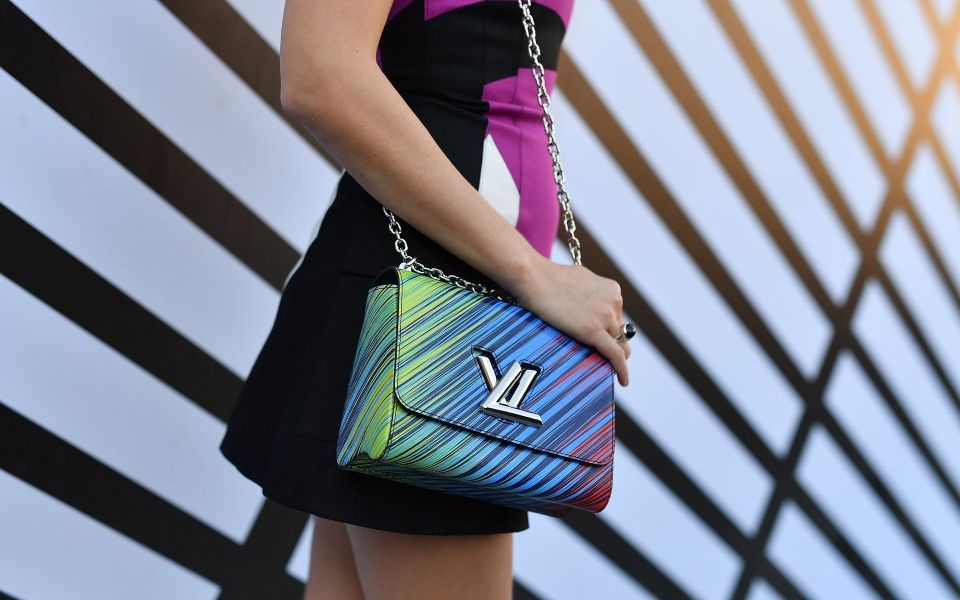Why ‘customer-centric’ is the latest designer label we all need

I'M NOT NORMALLY a fan of surveys, but the Interbrand Best Global Brands Report is, for me, an interesting read. This year’s report has made the headlines because the top-performing sector is the luxury fashion and accessories sector, which has grown by 42 percent since 2017. Why are designers doing well, and what can my clients learn from the brand value demonstrated by the companies that make the grade?
Twenty years ago, Sex and the City’s Carrie Bradshaw was the poster girl for designer consumerism; Gucci, Prada, Christian Dior, Christian Louboutin. Before that, Jennifer Saunders’ proclamation as Edina Monsoon in Absolutely Fabulous (“It’s Lacroix, sweetie!”) was a celebration of the brand. Labels mattered, as every red-carpet journalist who asked, “Who are you wearing?” knew.
Today, brand value comes from a much more fundamental place than just being desirable. Yes, it is a reflection of a product that works and of quality that lasts, but it’s also indicative of a level of customer understanding that reflects the way their customers see the world, and one that luxury brands are particularly good at. Beyond customer service is a new buzzword: customer-centric.
In his introduction to the report, Interbrand’s global chief executive Charles Trevail said, “A decade after the global financial crisis, the brands that are growing fastest today are those that intuitively understand their customers and make brave, iconic moves that delight and deliver in new ways.” He’s absolutely right. Brands including Visa, Panasonic, Toyota and John Deere are all clamouring to celebrate their inclusion on the list – and for good reason.
The top 100 companies included in the report are a mix of familiar every day brands – Gillette, McDonald’s, IKEA – and high-end luxury – Hermès, Louis Vuitton, Chanel – which have made the grade for having a customer-centric culture that, according to the report, recognises how customers think, feel and behave, and delivers “the most optimized experience possible across each and every customer touchpoint”.
Key to this, in particular for the luxury goods market, is appealing to a younger, more tech-savvy audience than has traditionally been the case, which is the reason Gucci has a “shadow cabinet” of younglings to appeal to millennials. It’s perhaps for this reason that now, after a decade of austerity, the luxury brand is making a comeback.
The report also states that “we receive five times more information every day than we did 30 years ago” and that “technology has profoundly changed how we interact with the world around us”. They’re absolutely right. Customers take to social media to vent their frustration when faced with poor customer service, and bad news travels fast. Good news, as I’ve observed often, markedly less so.
If you’re thinking of buying anything from food to furniture, the chances are you’ll do your research online before you buy to check out not just the product itself, or even the price, but the company you are buying from.
You’re more likely to post a review of a company after a bad experience than you are after a good one, so it’s no surprise that the report identifies Amazon, which, as the report says, is driven by its desire to be “the most customer-centric company on Earth”, is the fastest-rising brand this year with brand value growth of 56 percent.
Another predictable result is the company at the top of the tree. Apple has excelled through innovative products and embracing the role of technology to enhance customer experience, inspiring an emotional response from customers and a raft of copycat products in its wake.
Trevail again echoes my own thoughts when he says Apple “continues to set the standard for what it means to be a world-class brand in the 21st century by responding to today’s ever-changing customer expectations.”
What this all boils down to is the Interbrand Best Global Brands Report should be essential reading for any business wanting to succeed. Because whatever your product or service, brand value is about more than you think – and learning from the best is never a bad idea.